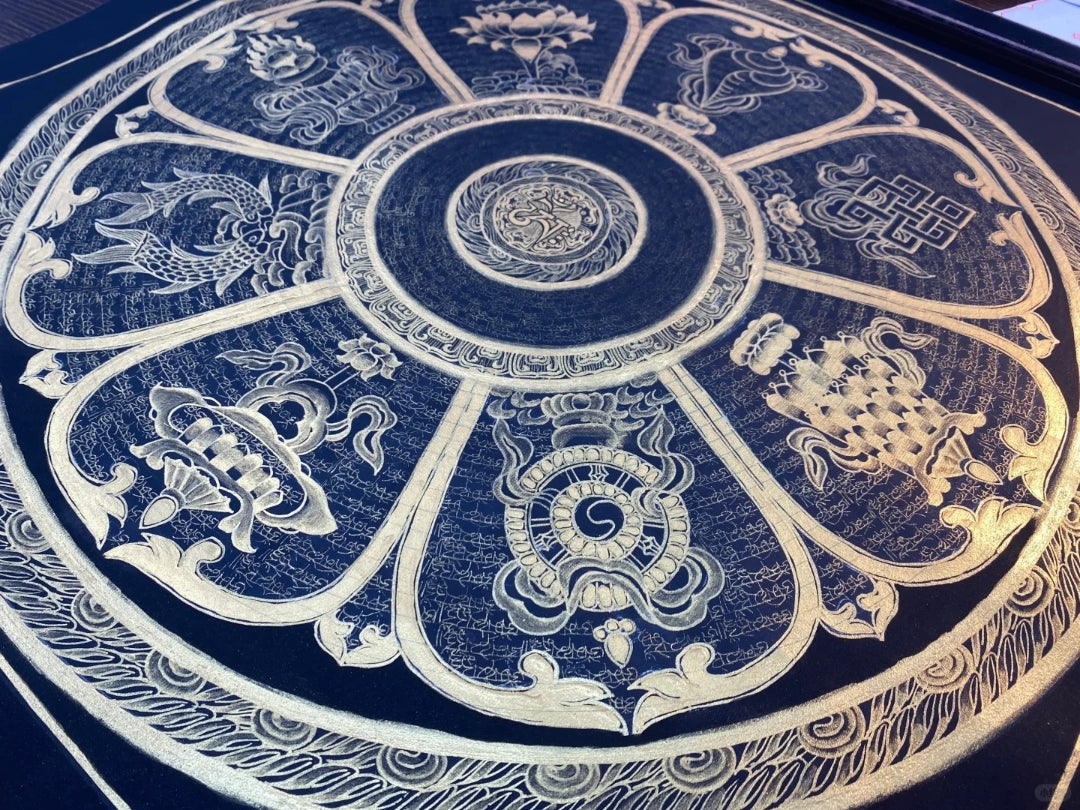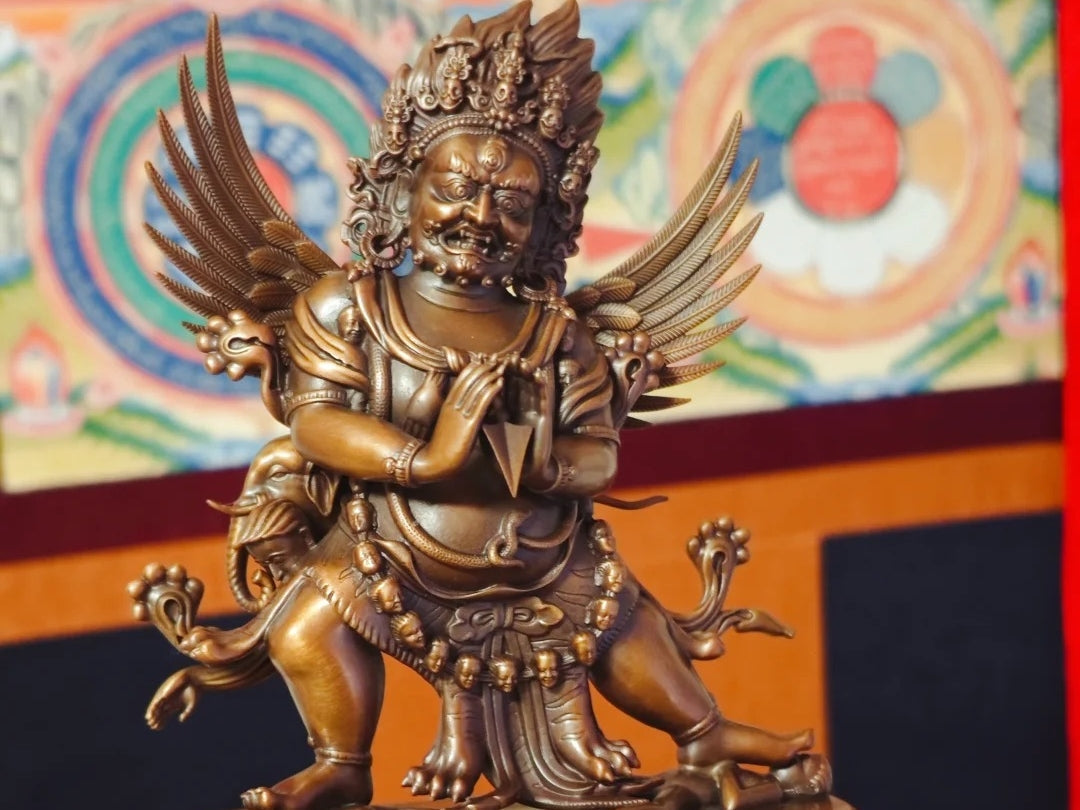The Two Buddhas You Often Hear About—But May Not Fully Know
If you've ever visited a Buddhist temple or browsed spiritual jewelry online, chances are you've come across the names Shakyamuni Buddha and Amitabha Buddha. They’re both central figures in Mahayana and Tibetan Buddhism—but who are they, and how are they different?
Let’s explore the stories, symbolism, and roles of these two enlightened beings, and why their presence—whether in sacred texts or a pendant close to the heart—matters deeply in Buddhist thought.

1. Two Paths to Enlightenment: Their Origin Stories
Shakyamuni Buddha, often called the “Historical Buddha,” was born over 2,500 years ago as Prince Siddhartha Gautama in ancient India. Though born into royalty, he was deeply troubled by the suffering he saw around him—birth, aging, sickness, and death. Renouncing his palace life, Siddhartha pursued intense spiritual practices, eventually attaining full enlightenment at the age of 35 under the Bodhi tree. From that moment, he became Shakyamuni (“Sage of the Shakyas”) and dedicated his life to teaching the path of liberation in what is now known as the Saha World—our world, with all its imperfections.
Amitabha Buddha, by contrast, is a celestial Buddha who attained enlightenment countless eons ago. According to the Infinite Life Sutra, he was once a compassionate king named Dharmakara who, inspired by a Buddha of his time, vowed to create a Pure Land—a realm of ultimate peace and joy. After making 48 great vows to save all beings, he spent countless lifetimes in spiritual cultivation. Finally, he realized Buddhahood and now resides in Sukhavati, the Western Pure Land, where sentient beings can be reborn through sincere devotion.

2. Where They Dwell: This World and the Next
Shakyamuni Buddha is associated with our physical world, often referred to as the Saha World—a place marked by suffering, impermanence, and the need for compassion and insight. His teachings—such as the Four Noble Truths and the Noble Eightfold Path—are practical tools for navigating life with mindfulness and wisdom.
Amitabha Buddha, on the other hand, presides over the Western Pure Land. In Buddhist cosmology, each Buddha has a realm that mirrors their perfected nature. Sukhavati is a land of bliss, free of suffering, where beings can practice the Dharma without hindrance and eventually attain enlightenment. For many practitioners, especially in Pure Land Buddhism, chanting “Namo Amituofo” (Homage to Amitabha Buddha) becomes a spiritual bridge to that realm.
3. Recognizing Their Forms: Who Stands Beside Them?
In traditional Chinese and Tibetan temples, you might find both Buddhas in the Main Hall (Mahavira Hall), though they’re accompanied by different attendants.
-
Shakyamuni Buddha is typically flanked by his two foremost disciples:
-
Mahakasyapa, the elder monk representing tradition and monastic discipline.
-
Ananda, the younger monk, known for his deep memory and gentle nature, who preserved much of the Buddha’s teachings.
-
-
Amitabha Buddha is usually depicted with:
-
Avalokiteshvara (Guanyin) on his left—a Bodhisattva of infinite compassion.
-
Mahasthamaprapta on his right—a Bodhisattva symbolizing the power of wisdom and clarity of mind.
-
Together, these three are known as the Western Trinity, guiding beings toward liberation through mindfulness and devotion.

4. Practice and Devotion: Two Paths, One Goal
While Shakyamuni teaches us to look inward through meditation, morality, and insight, Amitabha offers a devotional path—placing trust in the Buddha's vows and the power of his name to deliver us from suffering.
Both paths lead to the same goal: liberation from the cycle of birth and death. Some practitioners follow a disciplined path of meditation and mindfulness, while others place their faith in Amitabha’s Pure Land, repeating his name with sincerity.
As one classic saying goes:
“One flower, one world; one leaf, one Buddha.”
In other words, there are many approaches, all leading to the same essence of truth.
5. Symbols in Jewelry and Art
At QiLing Aura, you’ll find sacred symbols of both Buddhas in our Tibetan-inspired jewelry. From Amitabha pendants engraved with the sacred mantra Namo Amituofo, to Shakyamuni Buddha necklaces reflecting grounded wisdom, these pieces are more than adornments. They are anchors of meaning, mindfulness, and remembrance in daily life.
Wearing Buddhist jewelry—especially pieces that depict Shakyamuni Buddha or Amitabha Buddha—is a quiet yet powerful way to keep the Dharma close, not just as a belief, but as a way of life.
Final Thoughts
Understanding the distinctions between Shakyamuni and Amitabha is not about division—it’s about connection. One shows us how to walk the path in this world. The other reminds us that we’re never too far from a place of peace.
In the end, whether we chant a mantra, meditate in silence, or wear a small image close to our heart, we honor the same truth: the awakened potential within us all.
Namo Amituofo. Homage to Shakyamuni.



